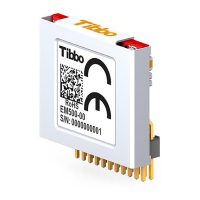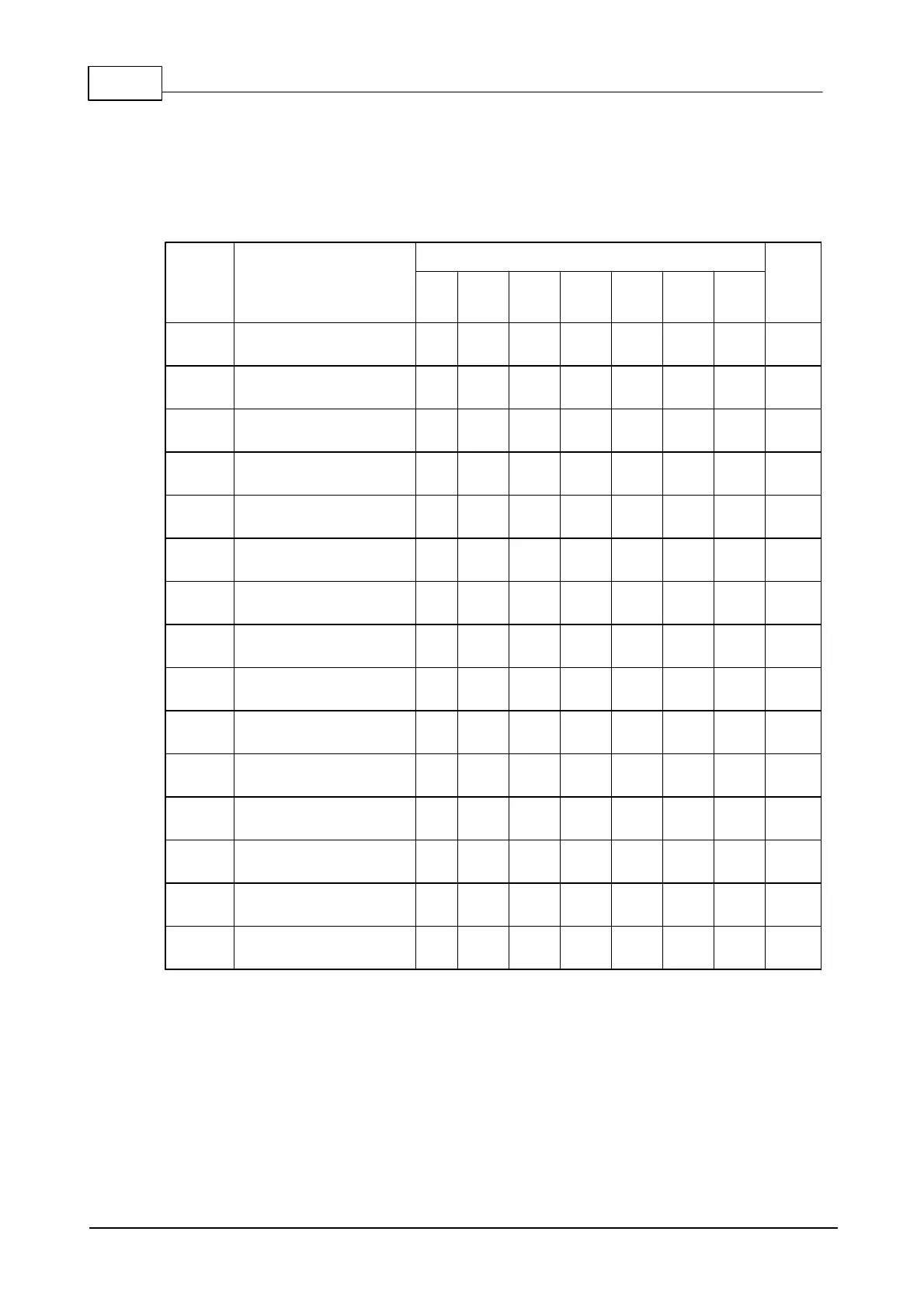453 Programmable Hardware Manual (PHM)
© Tibbo Technology Inc.
example, our own "serial-over-IP" application supports these lines. Again, instead of
using TX3 and RX3 (pins 4 and 6) as the lines of an independent serial channel, it is
possible to use them as DTR and DSR lines, as is common.
To simplify the discussion, let's look at the RS232 port from the serial-over-IP
application's point of view. This application defines 15 mapping options:
Pins on the DB9M connector
RX/TX/CTS/RTS/DS
R/DTR + RX/tx
RX/TX/CTS/RTS +
RX/TX + RX/tx
RX/TX/CTS/RTS +
RX/TX/CTS/rts
RX/TX/CTS/RTS +
RX/TX/DSR/dtr
RX/TX/DSR/DTR +
RX/TX + RX/tx
RX/TX/DSR/DTR +
RX/TX/CTS/rts
RX/TX/DSR/DTR +
RX/TX/DSR/dtr
RX/TX + RX/TX +
RX/TX + RX/tx
RX/TX/CTS/rts +
RX/TX + RX/TX
RX/TX/DSR/dtr +
RX/TX + RX/TX
RX/TX/CTS/RTS +
RX/tx/CTS/RTS
RX/TX/CTS/RTS +
RX/tx/DSR/DTR
RX/TX/DSR/DTR +
RX/tx/CTS/RTS
RX/TX/DSR/DTR +
RX/tx/DSR/DTR
"Available signals" column shows a particular combination of I/O lines for each
option. For example, option 0 defines the standard serial port arrangement with RX,
TX, CTS, RTS, DSR, and DTR lines. Option 2 gives you one channel with RX, TX,
CTS, and RTS lines, one more channel with just RX and TX lines, and yet another
channel with a single RX line. The TX line is "missing" because, once again, there are
only three outputs available. This is why this line is shown in gray (tx).

